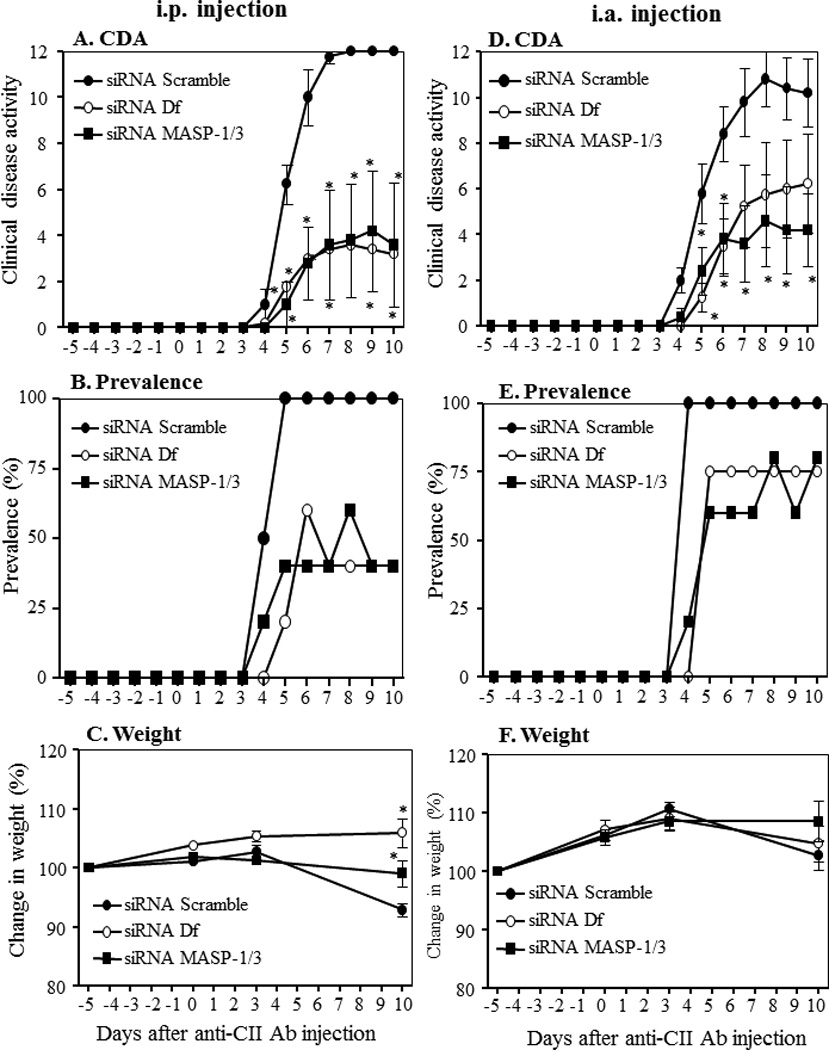Figure 4.

Decrease in the clinical disease activity in mice treated with siRNAs as scrambled control compared to siRNA specific for MASP-1/3 or Df. CAIA was induced in C57BL/6 WT mice with a mixture of anti-collagen monoclonal antibodies. A-C WT mice were injected i.p with a mixture of siRNAs duplexes as scrambled, MASP-1/3 specific or Df specific at day −5, day 3 and at day 10. A. CDA in mice treated with siRNAs as scrambled or specific for MASP-1/3 and Df. B. Prevalence (%) at day 10 in mice treated with siRNAs as scrambled or specific for MASP-1/3 and Df. C. Change in weight (%) in mice treated with siRNAs as shown. D-F In a separate cohort mice were injected i.a. (only in the right knee joint) with a mixture of siRNAs duplexes as scrambled or specific for MASP-1/3 and Df at day −5, day 3 and at day 10. D. CDA in mice treated with siRNAs indicated. E. prevalence (%) in mice treated with siRNAs as indicated. F. change in weight (%) in mice treated with siRNAs as indicated. Data shown represent the mean + SEM based on WT mice injected i.p. with siRNAs scrambled, n = 5, siRNAs for MASP-1/3, n = 5 and siRNAs for Df, n = 5 and also based on WT mice injected i.a. in the right knee joint with siRNAs scrambled, n = 5, siRNAs for MASP-1/3, n = 5 and siRNAs for Df, n = 5. *p<0.05 in comparison to mice to scrambled siRNAs injected mice.
